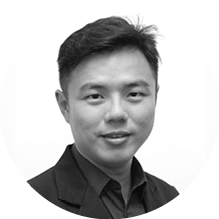
Singapore: A New Way of Doing Health
Singapore tops the CGGI overall. It also ranks highly (4th globally) for the Health indicator.
What principles have guided Singapore’s approach to improving its people’s health over the years?
In Singapore’s early post-independence years, health was not an immediate priority. The key concerns were national security, housing, and education. The government’s approach to health, and healthcare in those early years were pragmatic, focusing on building up a satellite network of maternal and child clinics and outpatient dispensaries. These are low-cost, high-return amenities that helped to strengthen access to basic healthcare services.
Over time, these clinics were consolidated into what we now know as polyclinics, with primary care doctors and nurses supported by a pharmacy and shared services such as X-ray and lab services. This offered a very cost-efficient model that was able to cater to a high volume of patients at a relatively low cost, providing very efficient services and preventive care services to many people across all age groups. Singapore’s public health system has been designed along three key principles. One of these is the concept of co-payment. So when polyclinics started, they charged 50 cents per visit, and one dollar on weekends—to encourage people to go to clinics on weekdays. Our late Prime Minister, Lee Kuan Yew, explained that co-payment sent a message that healthcare services would remain affordable but cannot be free, or they would not be sustainable. He had seen in other countries with high subsidies for healthcare that what was given for free was often poorly valued. This principle was further codified in our national DNA through the 1993 White Paper on Affordable Healthcare and has informed many policy decisions to this day.
A second principle has been recognising that while healthcare is not a perfect market economy, market forces can be used to raise quality and efficiency, by allowing the private sector to develop alongside a very strong public sector presence.

The third principle is that of freedom of choice: citizens have a choice of which clinic to go to, and whether to visit a private or public clinic. The private sector can compete in this space with the public sector, but the government clinics serve as a cost benchmark to keep prices grounded in the overall market.

Of course, every solution creates its own new challenges. Co-payment, for instance, started from a low bar, but as medical costs went up, co-payment started to become a burden for the poorest and most vulnerable groups. This then led to new initiatives such as the Medisave, MediShield, and MediFund schemes, to serve as safety nets for those who had difficulties with co-payment. This model of risk and cost sharing between the government and the people has now been studied by many countries around the world.
So one aspect of our system is that as circumstances evolve from decade to decade, new solutions have also been put forward to resolve the evolving challenges of the day.
What challenges does Singapore face in advancing its public health today?
One problem that we have today was a result of our success over the past few decades. Life expectancy has risen, which is a tribute to the healthcare system we have built.
But numbers do not tell the whole story. While we are indeed living longer, in 2019, the Global Burden of Disease study1 indicated that Singaporeans live the last ten years of our lives in poor health. This was also picked up by the local media and created quite a stir. It is costly, unproductive, and unpleasant for everyone to be living in poor health in their last decade of life.
A significant reason why people live this last decade in poor health has to do with preventable chronic diseases and their complications. There are also mental health issues such as depression and anxiety caused in part by higher rates of social isolation.
All this has led to a conversation nationally where we talk about moving from “lifespan” to “healthspan”. We want more people to be healthier and more active in their later years, and not be overly dependent on family or social care.
How is Singapore addressing these new health challenges?
We are moving into a new era where we realise that to make further progress on health outcomes, it is not useful to continue scraping the bottom of the barrel in the healthcare space: we need to move into the health and social space. One new initiative in this direction— the Healthier SG movement—encompasses many good principles of population health.
Healthier SG2 is a government-led initiative that focuses on preventive healthcare, and more proactive planning for each person’s health. It brings together many personal health and social aspects that have not been as well addressed in past policies and plans. It is about getting people to want to stay healthier.
The initiative builds on a 2017 Ministry of Health strategy for Singapore to pursue the “3 Beyonds”.3 That is to say, going beyond healthcare to health; beyond hospitals to communities; beyond quality to value. The idea is for Singaporeans to move from seeking healthcare to wanting to stay healthier; to visit hospitals less and instead tap into their local or community health services. We want to encourage Singaporeans to proactively adopt a healthier lifestyle, and maintain regular health checkups, rather than being reactive—waiting to see a doctor only when they are very sick, when it is more difficult and costly to treat them.

Value in healthcare is defined as outcomes over cost. We used to chase the outcomes. But increasingly we see that beyond a certain point there are diminishing returns, where each dollar spent may not lead to a great health improvement. The idea of going beyond quality to value is to aim for the sweet spot that represents the best value on investment and use that to help us prioritise how we spend each healthcare dollar.
For example, medical devices such as intraocular lenses can differ in cost by as much as 20 times, depending on where they are manufactured. Yet the technology has progressed to the point where there is not that much difference in quality between the SGD 2,000 and SGD 100 lens. The Ministry of Health’s evaluation units contribute by making a thorough cost-benefit analysis to confirm that the difference between A and B is not worth the large price difference. This is where Singapore’s cost-sharing principle comes in. If you are paying a portion of the bill yourself, you will consider whether you actually need to be paying much more for a similar quality item.
Healthier SG is in its early phases. One unknown is whether the public will indeed take steps to take charge of their own health in the intended way. We will not know the outcome of this initiative for another decade or two.
This initiative will require us to work closely with different stakeholders: the community, financing partners, different public agencies, and so on. One key factor in our favour is that the mindset of working across sectors, of taking a whole-of-government approach, is ingrained in our national thinking. It will not be easy to replicate that in many other places. Singapore is fortunate to also have many of the enablers that allow us to even try something as bold as this. In the context of the CGGI, you see that we have done well in many other relevant areas: strong institutions, good governance and leadership, good financial stewardship. This affords us the thought leadership and fiscal position to take this on.
What is your vision for the future of health?
I believe we should not be practicing public health as we did 20 years ago, because we now have many new powerful tools available to us.
For instance, Healthier SG will benefit from what Singapore is doing more generally as part of its Smart Nation ambitions.4 The government has made extensive investments in data infrastructure and in artificial intelligence, including a strong connected data system across the health and social care sector. A longer-term outcome of these combined efforts is what thought leaders have termed “precision public health”, which is a space I have been involved in, as a founding member of the Precision Public Health Asia Society. Precision public health builds on four key domains: precision medicine, digital health, big data, and the concept of population health.

An example of this at the national level is the PRECISESG100K project,5 which was set up by the Agency for Science, Technology and Research (A*Star) together with the National Medical Research Council. This government-led initiative looks to collect the genomic data of 100,000 of our people, and from there identify genetic markers that can cause increased risk of cancer or other hereditary diseases for example. While similar efforts are being carried out in other countries in the Western hemisphere, this sort of longitudinal study is still nascent in Asia, where we know there are different gene pools. So this will yield valuable data for medical research and development.
Apart from our genetic material, we also have a digital phenotype: digital health data that paints a picture of how we live, through our medical records and lifestyle data. We can combine these different kinds of data and use big data analysis to understand our population better. A new Health Information Bill will be tabled to Parliament in 2024, both to enable more data sharing and to ensure the proper stewardship of that data.
Beyond Healthier SG, with its message of preventive health and empowering people to take better care of themselves, we also have ongoing initiatives, such as Healthy 365 and the National Steps Challenge, which uses wearable technology and gamification ideas to encourage citizens to be more physically active. There is even a lot of promise in digital mental health, where we see apps being able to use artificial intelligence (AI) and large language models to give advice safely and non-intrusively, or to help flag the need for more specialised care, in ways that can be scaled up to make a difference.
All these pieces, on their own, if they succeed, would move the needle on Singaporeans’ health. But if they all work out, we could have a confluence of all these elements working together synergistically. Then Singapore could demonstrate—with good governance, a good fiscal position and good foresight and planning—what a different way of doing health can look like.
With timely, high-quality data and good analytics, we would no longer just be reacting to trends, but we could actually predict trends. We could then proactively plan services and other provisions ahead of time, both at the macro national level, and at the individual level. We could present people with information on their own health status and trends in simple, accessible, and actionable ways that could lead to measurably better health outcomes.

You consult for the World Health Organization (WHO) on strengthening health systems and digital health. What advice would you give to your peers in other countries looking to advance their own national health outcomes?
First, we must acknowledge that many health systems around the world are in crisis mode. The sector suffers from chronic understaffing and underinvestment. Based on my interactions with my peers around the world, I have realised that the health industry is very local and context-specific, and it is difficult to find a quick fix or a one-size-fits-all solution.

It is important, not to jump from crisis to crisis, from band aid to band aid, which is unfortunately quite common in health and healthcare. My advice would be to do a thorough needs and strengths analysis, which can then lead to a conversation about a multi-year strategic plan. From there, knowing that resources are limited, leaders would need to choose the high-value targets: elements that are foundational, that give the best returns on investment. That is what Singapore did very well in our early years, in focusing on primary care, maternal and child health, and also public health measures such as vaccinations, clean water, and sanitation.
Endnotes
- Institute for Health Metrics and Evaluation. (2019). Global Burden of Disease Study 2019. Global Burden of Disease Collaborative Network. https://www.healthdata.org/research-analysis/gbd
- Healthier SG. (2023). https://www.healthiersg.gov.sg/
- Khalik, S. (2017, November 30). The ’3 Beyonds’: Singapore’s strategy to sustain quality healthcare as demand rises. The Straits Times. https://www.straitstimes.com/singapore/health/the-3-beyonds-singapores-strategy-to-sustain-quality-healthcare-as-demand-rises
- Smart Nation is the Singapore Government’s national initiative to develop a digital-first government, economy, and society: harnessing technology to transform healthcare, transport, business, public services, and other key sectors. See: https://www.smartnation.gov.sg/
- Precision Health Research Singapore. (n.d.). PRECISE SG100K. https://www.npm.sg/partners/precisesg100k/

DR CLIVE TAN
Assistant Chief for Integrated Care and Population Health, National Healthcare Group, Singapore
Dr Clive Tan is a medical doctor and public health specialist with almost two decades of clinical and leadership experience in the healthcare sector. In his current role, he works to improve the health of 1.5 million residents in Singapore’s Central-North region, architecting health systems that focus on population health, integrated care, behavioural change, and care for the vulnerable and marginalised. An adjunct Assistant Professor at the National University of Singapore’s School of Public Health and the Duke-NUS Centre of Regulatory Excellence, he consults for the World Health Organization in the areas of digital health, population health, and universal health coverage. He is also a Senior Fellow in the Atlantic Institute (Oxford) and the Equity Initiative Programme (Thailand).
More Stories


Global Influence & Reputation Country Snapshot: Türkiye

